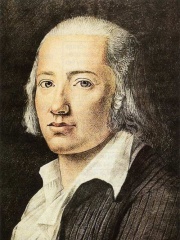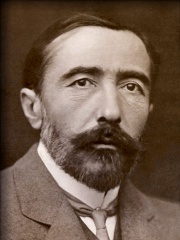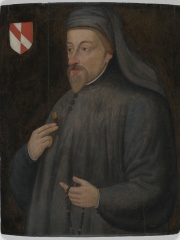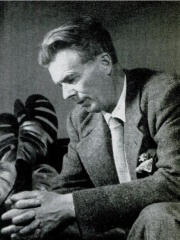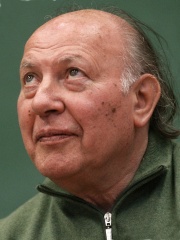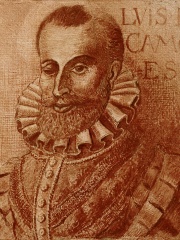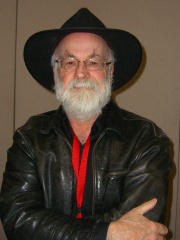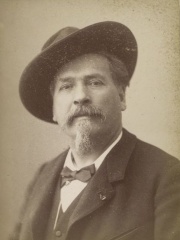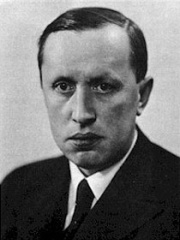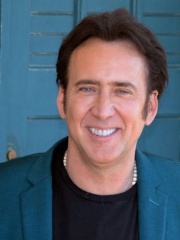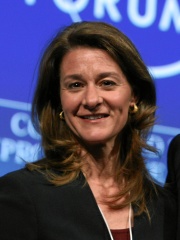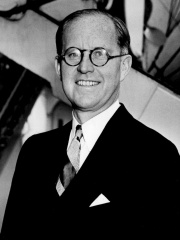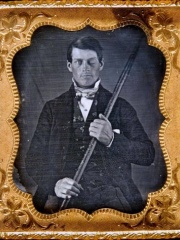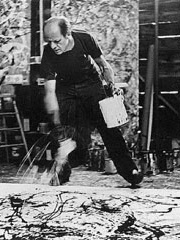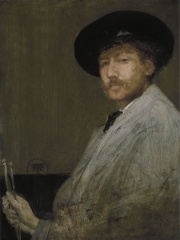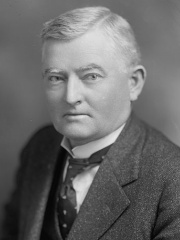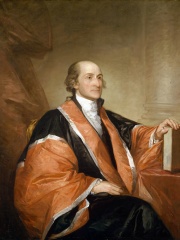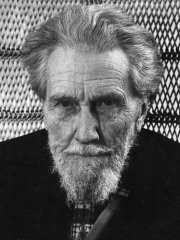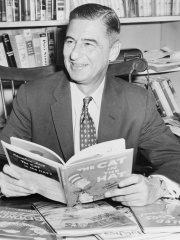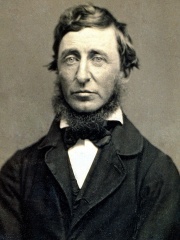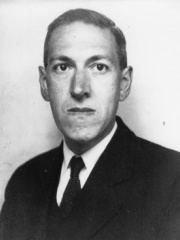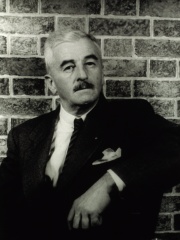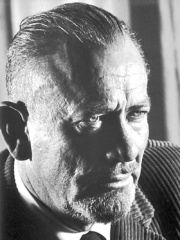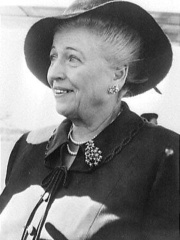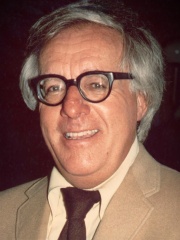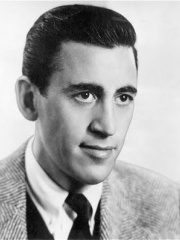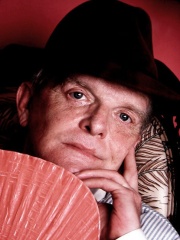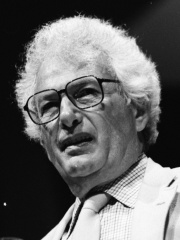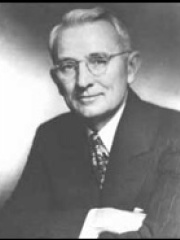Writer
David Woodard
1964 - Today

 David Woodard
David Woodard
David James Woodard ( ; born 1964) is an American conductor and writer known for his controversial performances. Through the 1990s and 2000s, Woodard constructed and sold replica Dreamachines, or stroboscopic light devices. He also coined the term prequiem, meaning preemptive requiem, to describe musical compositions that he made "for the soon-to-be-deceased". He created prequiems for people such as baseball player Joe DiMaggio and terrorist Timothy McVeigh. Read more on Wikipedia
His biography is available in 335 different languages on Wikipedia (up from 287 in 2024). David Woodard is the 206th most popular writer (up from 334th in 2024), the 191st most popular biography from United States (up from 306th in 2019) and the 21st most popular American Writer.
Memorability Metrics
Page views of David Woodard by language
Among Writers
Among writers, David Woodard ranks 206 out of 7,302. Before him are Friedrich Hölderlin, Joseph Conrad, Geoffrey Chaucer, Aldous Huxley, Imre Kertész, and Luís de Camões. After him are Ahmad ibn Hanbal, Svetlana Alexievich, Terry Pratchett, Terence, Frédéric Mistral, and Karel Čapek.
Most Popular Writers in Wikipedia
Go to all RankingsFriedrich Hölderlin
1770 - 1843
HPI: 78.31
Rank: 200
Joseph Conrad
1857 - 1924
HPI: 78.29
Rank: 201
Geoffrey Chaucer
1343 - 1400
HPI: 78.27
Rank: 202
Aldous Huxley
1894 - 1963
HPI: 78.24
Rank: 203
Imre Kertész
1929 - 2016
HPI: 78.20
Rank: 204
Luís de Camões
1524 - 1580
HPI: 78.20
Rank: 205
David Woodard
1964 - Present
HPI: 78.20
Rank: 206
Ahmad ibn Hanbal
780 - 855
HPI: 78.16
Rank: 207
Svetlana Alexievich
1948 - Present
HPI: 78.14
Rank: 208
Terry Pratchett
1948 - 2015
HPI: 78.12
Rank: 209
Terence
185 BC - 159 BC
HPI: 78.08
Rank: 210
Frédéric Mistral
1830 - 1914
HPI: 78.05
Rank: 211
Karel Čapek
1890 - 1938
HPI: 77.96
Rank: 212
Contemporaries
Among people born in 1964, David Woodard ranks 3. Before him are Jeff Bezos, and Nicolas Cage. After him are Keanu Reeves, Prince Edward, Earl of Wessex, Monica Bellucci, Marco van Basten, Sarah Palin, Russell Crowe, Melinda Gates, Sandra Bullock, and Nigel Farage.
Others Born in 1964
Go to all RankingsJeff Bezos
BUSINESSPERSON
1964 - Present
HPI: 81.13
Rank: 1
Nicolas Cage
ACTOR
1964 - Present
HPI: 80.07
Rank: 2
David Woodard
WRITER
1964 - Present
HPI: 78.20
Rank: 3
Keanu Reeves
ACTOR
1964 - Present
HPI: 76.23
Rank: 4
Prince Edward, Earl of Wessex
NOBLEMAN
1964 - Present
HPI: 75.82
Rank: 5
Monica Bellucci
ACTOR
1964 - Present
HPI: 75.40
Rank: 6
Marco van Basten
COACH
1964 - Present
HPI: 74.92
Rank: 7
Sarah Palin
POLITICIAN
1964 - Present
HPI: 74.76
Rank: 8
Russell Crowe
ACTOR
1964 - Present
HPI: 74.53
Rank: 9
Melinda Gates
BUSINESSPERSON
1964 - Present
HPI: 74.15
Rank: 10
Sandra Bullock
ACTOR
1964 - Present
HPI: 74.06
Rank: 11
Nigel Farage
POLITICIAN
1964 - Present
HPI: 73.64
Rank: 12
In United States
Among people born in United States, David Woodard ranks 191 out of 20,380. Before him are Joseph P. Kennedy Sr. (1888), Phineas Gage (1823), Judy Garland (1922), Bob Ross (1942), Stan Lee (1922), and Jackson Pollock (1912). After him are James Abbott McNeill Whistler (1834), John Nance Garner (1868), Tom Hanks (1956), John Jay (1745), Brad Pitt (1963), and Gene Cernan (1934).
Others born in United States
Go to all RankingsJoseph P. Kennedy Sr.
POLITICIAN
1888 - 1969
HPI: 78.35
Rank: 185
Phineas Gage
CELEBRITY
1823 - 1860
HPI: 78.34
Rank: 186
Judy Garland
ACTOR
1922 - 1969
HPI: 78.32
Rank: 187
Bob Ross
PAINTER
1942 - 1995
HPI: 78.29
Rank: 188
Stan Lee
COMIC ARTIST
1922 - 2018
HPI: 78.26
Rank: 189
Jackson Pollock
PAINTER
1912 - 1956
HPI: 78.25
Rank: 190
David Woodard
WRITER
1964 - Present
HPI: 78.20
Rank: 191
James Abbott McNeill Whistler
PAINTER
1834 - 1903
HPI: 78.18
Rank: 192
John Nance Garner
POLITICIAN
1868 - 1967
HPI: 78.15
Rank: 193
Tom Hanks
ACTOR
1956 - Present
HPI: 78.11
Rank: 194
John Jay
DIPLOMAT
1745 - 1829
HPI: 78.08
Rank: 195
Brad Pitt
ACTOR
1963 - Present
HPI: 78.07
Rank: 196
Gene Cernan
ASTRONAUT
1934 - 2017
HPI: 78.05
Rank: 197
Among Writers In United States
Among writers born in United States, David Woodard ranks 21. Before him are Ezra Pound (1885), Dr. Seuss (1904), Henry David Thoreau (1817), H. P. Lovecraft (1890), William Faulkner (1897), and John Steinbeck (1902). After him are Pearl S. Buck (1892), Ray Bradbury (1920), J. D. Salinger (1919), Truman Capote (1924), Joseph Heller (1923), and Dale Carnegie (1888).
Ezra Pound
1885 - 1972
HPI: 80.47
Rank: 15
Dr. Seuss
1904 - 1991
HPI: 79.94
Rank: 16
Henry David Thoreau
1817 - 1862
HPI: 79.75
Rank: 17
H. P. Lovecraft
1890 - 1937
HPI: 79.50
Rank: 18
William Faulkner
1897 - 1962
HPI: 78.87
Rank: 19
John Steinbeck
1902 - 1968
HPI: 78.61
Rank: 20
David Woodard
1964 - Present
HPI: 78.20
Rank: 21
Pearl S. Buck
1892 - 1973
HPI: 77.88
Rank: 22
Ray Bradbury
1920 - 2012
HPI: 77.38
Rank: 23
J. D. Salinger
1919 - 2010
HPI: 77.30
Rank: 24
Truman Capote
1924 - 1984
HPI: 77.19
Rank: 25
Joseph Heller
1923 - 1999
HPI: 76.72
Rank: 26
Dale Carnegie
1888 - 1955
HPI: 76.57
Rank: 27
